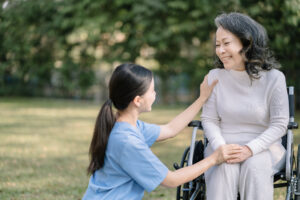Burn injuries can be one of the most agonizing and terrible experiences one can sustain. Whether it's a small cooking area accident or an extreme shed from a crash, comprehending the phases of melt wound healing is important for effective treatment and healing. In this article, we will delve deep right into the Childcare First Aid Noosaville - First Aid Pro intricacies of shed injuries, their classification, healing processes, and necessary care techniques.
Understanding Burn Injury Healing Presents: Recuperation Insights
Burns are classified into different levels based upon their intensity, each calling for particular clinical attention and care. The recovery process includes distinct phases that have to be identified to make certain proper administration and rehabilitation.

What Are the Different Kinds Of Burns?
Burns are normally classified into 3 primary kinds:
First-Degree Burns: These influence only the external layer of skin (epidermis). Signs consist of inflammation, light swelling, and pain.
Second-Degree Burns: These extend into much deeper layers of skin (dermis), causing sores, serious discomfort, and swelling.
Third-Degree Burns: These involve all layers of skin and might harm underlying cells. They appear white or charred and can be painless because of nerve damage.
Each kind necessitates varying degrees of clinical treatment and home care strategies.
The Recovery Process: An Overview
1. Hemostasis Phase
Immediately after a melt injury takes place, the body initiates the hemostasis phase to stop any type of blood loss. Blood vessels restrict to reduce blood circulation to the afflicted area while platelets aggregate to develop a clot.


2. Inflammatory Phase
This phase complies with hemostasis and normally lasts for 3-5 days post-injury. It involves:
- Increased blood flow to provide immune cells. Swelling as liquids collect in the tissue. Pain as nerve endings come to be sensitized.
3. Proliferative Phase
Taking place from concerning day 3 to week 3 post-burn, this phase consists of:
- Formation of brand-new cells with collagen deposition. Re-epithelialization where brand-new skin cells migrate throughout the injury bed. Angiogenesis-- the development of new members vessels-- to supply nutrients to recovery tissues.
4. Renovation Phase
This last stage can last several months to years after a burn injury and is noted by:
- Maturation of collagen fibers. Decreased vascularity as structures mature. Potential for scar development depending on severity.
Importance of Specialized Burn Dressings: Vital Burn Supplies for Home Care
Proper dressing is vital in taking care of shed injuries effectively at home. Specialized burn dressings offer numerous objectives:
- They safeguard versus infections by creating a barrier versus pathogens. They maintain wetness while enabling gases exchange which is essential for healing. Some dressings include antimicrobial buildings that avoid infection.
It's essential to choose proper dressings based upon melt degree and size. As an example, hydrogel dressings are typically suggested for second-degree burns as a result of their cooling effect.
Scar Management: Healing After Major Burns
Once a burn has actually healed, scar administration becomes essential for recovering function and appearance:
Silicone Gel Sheets: Applying these helps squash elevated marks over time. Massage Treatment: Motivating blood circulation can enhance flexibility in scar tissue. Laser Treatments: Doctor may suggest these for much more serious scarring cases.Common Misunderstandings Concerning Burn Treatment
CPR Always Reboots Heart Misconception: Debunking Common Burn Therapy Misconceptions
One prevalent myth surrounding CPR is that it constantly reactivates the heart; however, this isn't true-- CPR boosts opportunities of survival however does not assure heart task resumes instantly after heart attack. Understanding such misconceptions can help in supplying exact first aid throughout emergency situations entailing burns or other severe injuries.
FAQs regarding Burn Injury Healing
1. What must I do promptly after sustaining a burn?
Answer: Cool the location under running water for at least 20 mins and cover it with a tidy fabric or specialized clothing if necessary.
2. For how long does it take for burns to heal?
Answer: Recovering times vary by shed degree; first-degree burns usually recover within a week while second-degree burns can Visit this link use up to 3 weeks or even more depending on severity.
3. When must I look for medical focus for a burn?
Answer: Seek expert assistance if you have second-degree burns larger than 3 inches or any kind of third-degree burns, regardless of size.
4. Can I make use of ice straight on a burn?
Answer: No, applying ice straight can cause more skin damage; use cool (not cold) running water instead.
5. Is there any type of efficient home remedy for burns?
Answer: Aloe vera gel has calming homes that may aid with small burns yet get in touch with healthcare providers concerning substantial injuries.
6. Just how do I understand if my burn is infected?
Answer: Indicators consist of raised redness, swelling, pus discharge, high temperature, or aggravating discomfort; seek immediate clinical suggestions if you think infection.
Conclusion
Understanding melt wound recovery phases is essential not simply for clients yet likewise caregivers that provide support during recuperation stages. Understanding concerning specialized therapies-- like specialized dressings-- and positive scar administration substantially influences lasting outcomes after major burns occur.
Through understanding campaigns that stress safety around common threats like campfires or kitchen area tools-- such as crinkling irons-- we can prevent lots of cases prior to they take place! By understanding just how to react with effective emergency treatment skills (like those instructed in HLTAID012 training courses), you empower on your own with beneficial devices that protect lives throughout emergencies including burns or various other severe injuries.
In summary, expertise really is power when managing potential emergency situations associated with burns-- from understanding treatment protocols like chemical or electrical burns emergency treatment guidelines down with different child-centric issues seen within education setups-- every information matters in guaranteeing safety!
This comprehensive overview intends not only to notify however likewise motivate confidence in handling complex scenarios effectively-- after all-- avoidance combined with timely intervention saves lives!